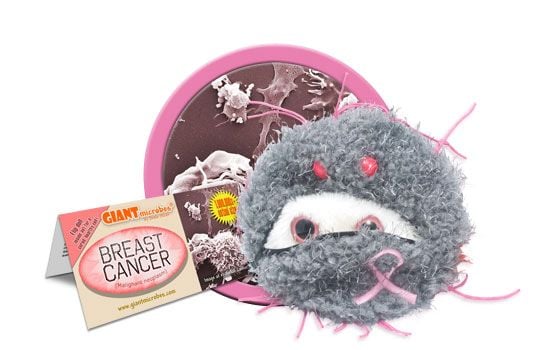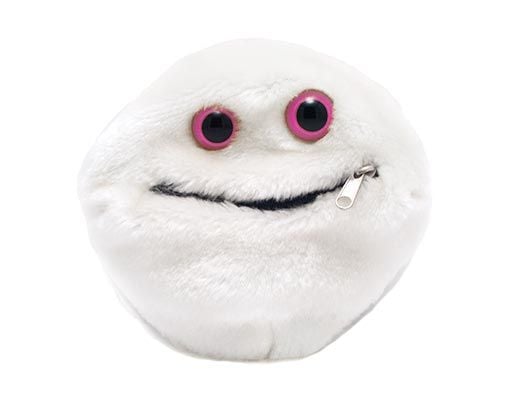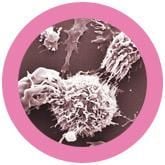Breast Cancer (Malignant neoplasm)
Out of Stock
Our Cancer cell can be "cured" by flipping it inside-out!

Your purchase supports NBCF’s early detection, education and support services. 10% of your purchase will be donated to NBCF.
Product Details
Additional Information
| Sizes | Giantmicrobes are based on actual microbes, cells, organisms and other critters, only 1,000,000 times actual size! Gigantic (GG) 16-24" XL (XL) 10-15" Original (PD) 5-8" Keychain (KC) 2-4" with clip |
|---|---|
| Materials | Plush from all new materials. Stuffed with polyester fiber fill. Surface washable: sponge with water & soap, air dry. |
| Packaging | Each plush microbe includes a printed card with fun, educational and fascinating facts about the actual microbe or cell. |
| Safety | Every product meets or exceeds U.S. and European standards for safety. For ages 3 and up. |
All about Breast Cancer (Malignant neoplasm)
FACTS: Breast cancer usually begins as a lump that can be seen in a mammogram or felt when the breast is examined. Fortunately, the majority of breast lumps are non-malignant cysts or fibrous tissue. But sometimes lumps are formed when good cells turn bad and start multiplying rapidly to form a tumor.
The exact causes of these malignant mutations are unknown, so it is impossible to predict accurately who will develop them. However, risk-factors that increase the probability of developing the disease include a family history of breast or ovarian cancer, increasing age, never having breastfed, never having given birth, long-term hormone replacement therapy, and smoking. (Men can get breast cancer, too. There is a small amount of breast tissue, consisting mainly of ducts, in the male chest, and about 1% of breast cancers occur in men.)
Depending on the type and stage of the tumor, treatment may include surgery, chemotherapy, hormone therapy, biologic therapy, and radiotherapy. (Chemotherapy works by killing cells that are actively dividing, which is why even healthy cells that grow constantly, such as those that produce hair, are impacted.)
Although breast cancer is extremely serious, most people (approximately 80%) who get it survive, particularly if treatment is initiated early in the course of the disease before it has spread from its original site. Self-examination and regular checkups are critical for early detection.
| Where It Lives | Our bodies are made of billions of cells that are programmed to grow, divide, and die over time. When any cells don’t die, it can cause cancer. Breast cancer is a cellular disease caused by uncontrolled division of abnormal cells in breast tissue. It’s the most common type of cancer in women worldwide! |
|---|
| Symptoms | Breast cancer can forms tumors in the breast that can be benign or malignant. A benign tumor isn’t cancerous and doesn’t cause damage to the cells around them, but malignant tumors will destroy the surrounding normal cells and damage healthy tissues. It can also cause tenderness or pain in and around the nipple. |
|---|
| Cure | Treatment varies with each individual, but most people undergo a combination of treatments, such as surgery with chemotherapy and/or radiation therapy. |
|---|
| History | The first documented description of cancer was written by Edwin Smith Papyrus around 3000 B.C. He noted that this was a disease with no cure! |
|---|
| Fascinating Facts |
Although it’s the most common form of cancer found in women, breast cancer can occur in men as well! Famous people who had it: 1965: Julia Child, chef and author of Mastering the Art of French Cooking, had a double mastectomy 1987: Former First Lady, Nancy Reagan, was diagnosed with it in and underwent a double mastectomy 1992: Olivia Newton John, singer and actress, was diagnosed |
|---|








